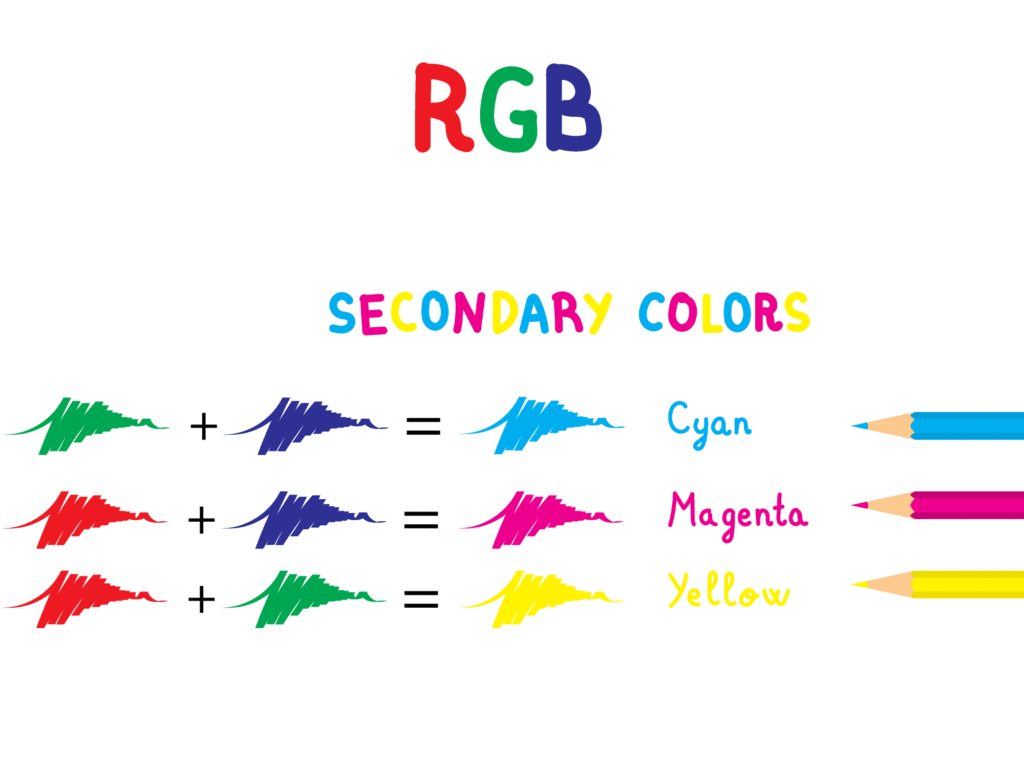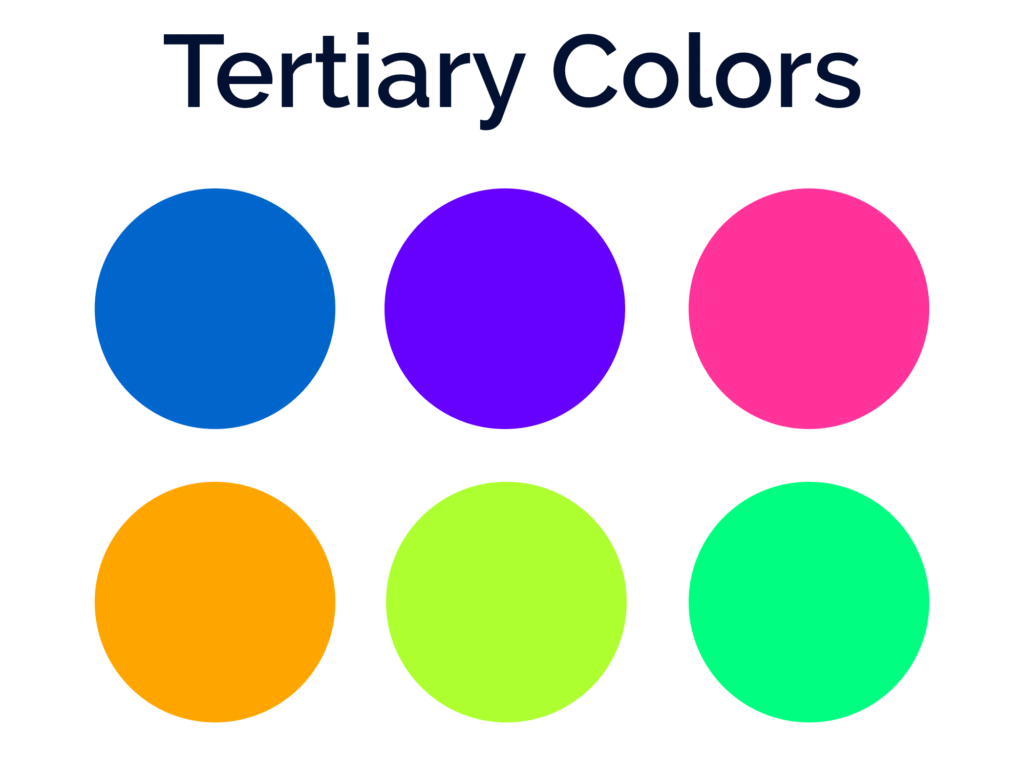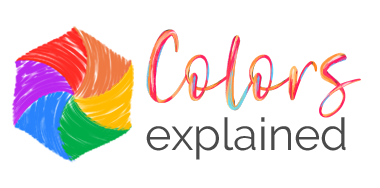Here’s everything you need to know about intermediate colors.
Intermediate colors are a vital but often misunderstood part of the color wheel.
In order to understand intermediate colors, you first need to understand a good amount of color theory.
In this post, we’ll explain what intermediate colors are, how to make them, and answer the question, “what are the intermediate colors?”
This will give insight into the often-misunderstood world of intermediate colors and open up new artistic and design possibilities.

Color Theory
Intermediate colors are crucial to color theory.
They’re closely related but separate from the secondary colors, meaning you’ll often run across intermediate colors when mixing paint or pigments. You’ll also repeatedly need to use them when developing color schemes or combinations.
Knowing how to work with intermediate colors is necessary to mix paints and pigments to get the most comprehensive array of colors possible or achieve a specific color you want.
Intermediate colors also allow greater flexibility outside the realm of primary and secondary colors.
Primary, Secondary, and Tertiary Colors
To understand intermediate colors, first, we need to have a firm grasp on primary, secondary, and tertiary colors. Here’s a quick primer to get you up to speed:
Primary Colors
Primary colors are the only colors that can’t be created by mixing other colors together, also known as pure colors.
In RYB, they are red, yellow, and blue. In RGB, they are red, green, and blue. And in CMYK, they are cyan, magenta, and yellow.

Secondary Colors
Secondary colors consist of equal parts of two primary colors.
In RYB, they are orange, purple, and green. In RGB, red, green, and blue. And in the CMYK, they’re cyan, magenta, and yellow.

Tertiary Colors
In the RYB model, tertiary colors are made by mixing equal parts of two secondary colors and are not displayed in the color wheel (intermediates are). They are slate, olive, and brown.
However, their definition changes when using the RGB or CMYK models. In these colors models, tertiary colors, also known as intermediate colors, are made by mixing equal parts of one primary color and one secondary color. They are rose, violet, azure, spring green, chartreuse, and orange.

Intermediate Colors Explained
Intermediate colors are often misunderstood because their definitions can get a bit complicated. Again, it depends on which medium you’re working in and which color model applies.
Intermediate Colors in Art – RYB Model
The RYB model applies when working with a color mixing technique (paints) or other traditional art media. They are subtractive colors.
You can create intermediate colors by mixing a primary color with a secondary color.
As such, you can find intermediate colors on the color wheel in the gaps between primary and secondary colors, with their exact positioning depending on the ratio of each color used.
They’re referred to as intermediate colors because they’re variations on the secondary colors created by mixing a primary and secondary color.
They’re the intermediary between primary and secondary colors. This means they provide a helpful stepping-stone between the two.
Intermediate colors are often confused with tertiary colors. There’s a lot of conflicting information out there.
This misconception is because depending on what color model you’re working with, they can be synonymous with each other. We’ll get into this more when we talk about intermediate colors in the RGB and CMYK color models.
Examples of Intermediate Colors in the RYB Model
Intermediate Colors of Light and Pigment – RGB and CMYK Models
Intermediate colors are the same as tertiary colors in these color models (which deal with mixing light and pigments rather than paint). RGB is an additive color model, while CMYK is a subtractive color model.
You can find them on the color wheel between the primary and secondary colors and can make them by mixing primary and secondary colors together.
Intermediate/Tertiary Colors in the RGB and CMYK Models
- Chartreuse (green + yellow)
- Spring green (green + cyan)
- Azure (blue + cyan)
- Violet (blue + magenta)
- Rose (red + magenta)
- Orange (red + yellow)
Recap on Intermediate Colors
Because this concept is confusing, here’s its definition to make sure it’s all clear:
- Intermediate colors in RYB: a set of six colors on the color wheel where each is made by mixing a primary and secondary color.
- Intermediate colors in RGB and CMYK: a set of six colors on the color wheel where each is made by mixing a primary and secondary color. They are also known as tertiary colors.
How Intermediate Colors Are Named in RGB
The naming system for intermediate colors is simple. The newly-created color is named by listing the primary color first, followed by the secondary color.
For example, if we mix red and orange, we get red-orange. This makes it easy to identify when we’re looking at an intermediate color (you can just check the name) and to know what colors were mixed to create that intermediate color.
Did you enjoy reading about the intermediate colors? Then share it with a friend who might find this article interesting too!
